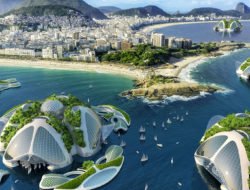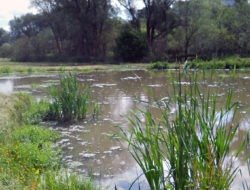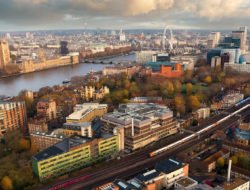In The World Without Us, the American journalist Alan Weisman conducts an amazing investigation: what would become of the planet Earth if mankind were to suddenly disappear? Tangentially, his book provides a fresh look at urban planning and architecture: a struggle against nature doomed to fail.
Starting from a theoretical hypothesis that comes a priori from science fiction – how would nature react in the event of the extinction of the human species? – Alan Weisman crosses scientific disciplines (architecture, geography, demography, oceanography, etc.) to study the real impact of our presence on Earth. He makes an unpleasant assessment of our civilization to finally arrive at the inevitable conclusion that our planet – including fauna and flora – would be much better off after our disappearance. So much for the philosophical, even metaphysical aspects.
Nevertheless, wondering how many years our buildings could survive us, the author gives us a fresh look at the very essence of urban development and architecture. Thus, without any human activity, a few days would be enough for a city like New York to be completely flooded. Indeed, without human intervention the systems that pump water to allow the passage of the metro would stop in a few days and completely drown the city. Even more surprising: the sudden end of car traffic would weaken the roads and bridges. The passage of thousands of vehicles each day on a bridge has the effect of naturally sweeping away the millions of spores and seeds that land on the bitumen. Without traffic, they intrude into the gaps in the concrete which ends up cracking and lifting under the force of the plants growing in its cracks. The same goes for the buildings, which would be quickly taken over by all kinds of animal and plant species, before collapsing under the devastating effects of these new colonizers.
From dust to dust
The book continues its demonstration through the examples of nuclear power plants and oil rigs, all of which would explode one after the other in the absence of human intervention. Indeed automatic safety systems are not designed to operate indefinitely on their own. The conclusion of Weisman and the many scientists he questioned on this subject: the durability of all our constructions is intrinsically dependent on the use we make of them. Without human presence they would collapse, one after the other.
After reading The World Without Us we are forced to take a fresh look at all our infrastructures: that of an effort of perpetual resistance against the unshakeable movement of nature that never ceases to regain its rights. Even the most elementary everyday gestures (vacuuming, mowing the lawn, cleaning the terrace) are analysed from this angle. Without these gestures, we would quickly lose control of our homes. The same goes for our buildings, motorways, factories, sewage treatment plants, railway stations, airports, etc.
Weisman’s work does not end with questions related to urban planning and architecture. It also raises many other questions relating to the state of our oceans, our cohabitation with other species, migratory movements, food overconsumption, waste production etc.
Sometimes quite dense in its descriptions of chains of chemical reactions that lead to this or that phenomenon The World Without Us nonetheless remains an absolutely indispensable read for any citizen who questions our place on Earth and, by extension, on the way in which our cities are built in harmony (or not) with nature.
For more information about the work of Alan Weisman: http://www.worldwithoutus.com/
Tags: Alan Weisman, demography, Environment, extinction of the human species, The World Without Us







































